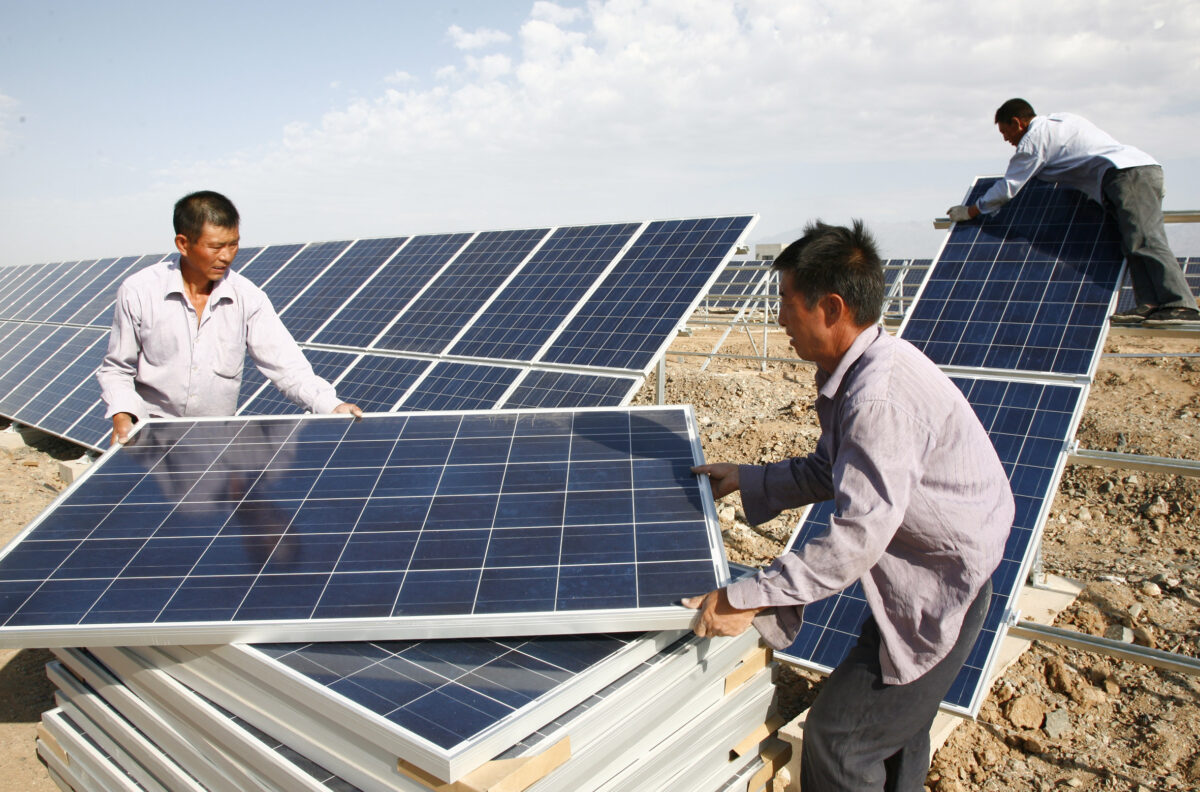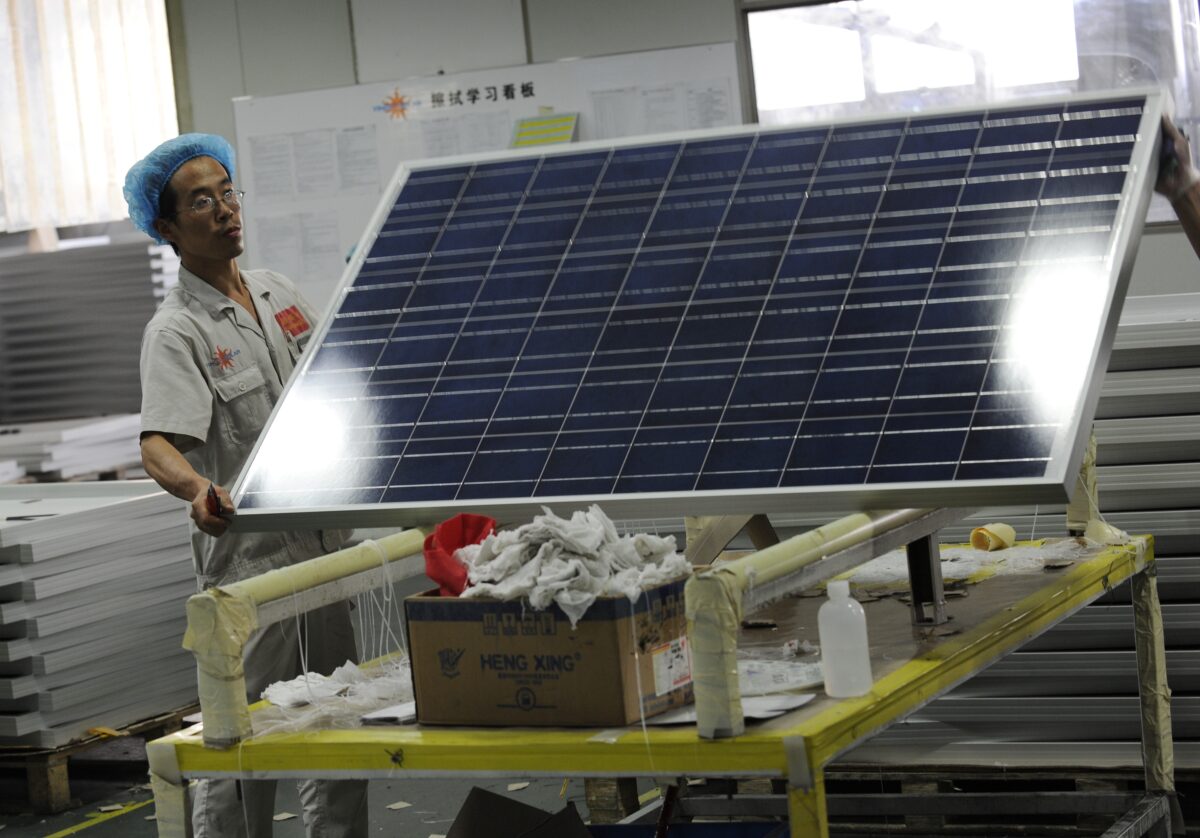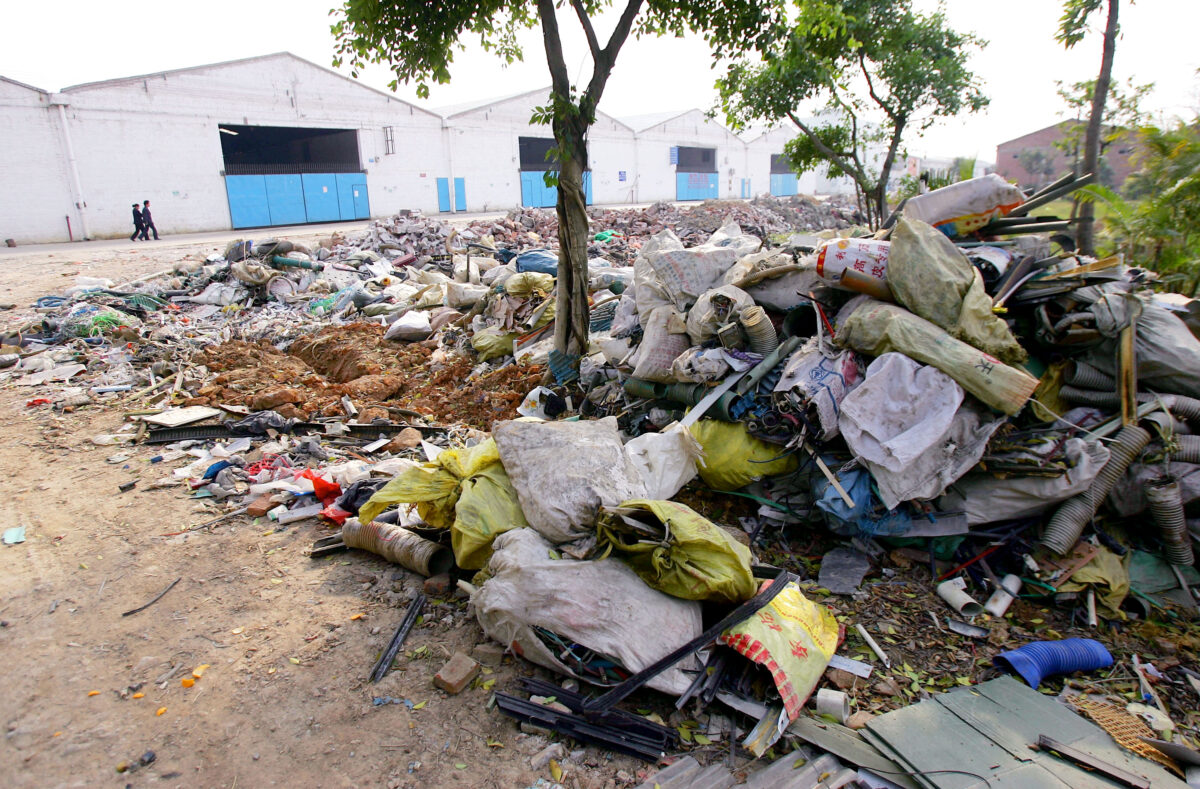By Anne Zhang and Lynn Xu
April 8, 2023Updated: April 8, 2023
A worker installing
polycrystalline silicon solar panels as a terrestrial photovoltaic power
project started in Guanshui Town of Muping District on Nov. 17, 2015, in
Yantai, Shandong Province, China. (VCG/VCG via Getty Images)
China is facing a
recycling challenge and environmental strain caused by large numbers of
end-of-life solar panels after a decade of rapid photovoltaic (PV) industry
expansion.
Over the years, China has
been scrambling to increase its PV production and ignoring uneven adherence to
technology standards. As a result, massive numbers of solar panels become
out-of-service before expected, Fang Qi, an investment consultant living in the
United Kingdom, told The Epoch Times on April 4.
Recycling solar panels
has become an increasingly pressing issue in China, said Fang, citing that the
scrapping rate of PV panels has reached about 30 percent per year.

By 2030, China’s PV
module waste is predicted to reach about 18 GW and 1.4 million tons, while by
2040, the number will soar to 253 GW, “about 20 million tons,” said Liu Limin, deputy
secretary of the PV specialized committee of China ECOPV Alliance, on March 17
at the Tenth Guangdong PV Forum.
This is a decade ahead of
the International Renewable Energy Agency’s (IRENA) previous forecast (pdf), which estimated that
China’s PV panel waste volume would reach 20 million tons by 2050.
Jiang Hua, assistant
secretary general of the CPIA, told Xinhuanet, a
Chinese official media, last May that China’s installed PV capacity
reached the GW level for the first time in 2011. Based on the 20-year lifespan
of PV modules, a large number of scrapped modules will emerge by 2031. In
reality, however, the mass scrapping of panels arrives earlier than expected.
China’s manufacture and
application of PV modules account for more than 70 percent of the world’s
production, according to Liu Limin. Thus once those PV modules are discarded,
handling the waste with burial, incineration, and natural degradation will
inevitably wreck the environment, she said.
A notice issued by China
Photovoltaic Industry Association (CPIA) in early March indicated that a
recycling working group, aiming to cope with waste PV modules, is underway.
High-Cost
of Recycling PV Panels
PV panel recycling in
China is confronted with the problems of high cost and low revenue.
According to an official
standard for recycling waste PV panels released in August 2022, in terms of the
composition of the PV module, glass makes up 70 percent of the weight of the
panel; an aluminum frame accounts for 10 percent, adhesive sealant 10 percent,
silicon 5 percent, metals such as silver, copper, and gallium add up to about 1
percent.
Solar PV panels are
usually cured by sandwiching the PV module between the backing plate and the
glass cover and then secured by an aluminum frame. This design makes the
discarded panels difficult to disassemble. Much of the recycling work stops at
removing the aluminum frame and electrical junction box, and the rest is
usually shredded and sold as low-value pellets or broken glass.
Metals have a value of up
to two-thirds of the PV panel materials but cost more to recycle.

“It is challenging to recycle
PV panels due to high logistics costs, immature recycling technology, high
investment consumption, low purity of recyclables, and the fact that yet formed
a scale,” said He Shuangquan, CEO
of Suntech Power, a prominent Chinese PV manufacturer in Wuxi city of eastern
coastal Jiangsu Province, to China Securities Journal in May last year.
He Shuangquan pointed out earlier in a paper
that the value of metals like as aluminum and silver that can be extracted from
a retired PV module is about 56.5 yuan (about $8.20). Recycling each module
costs about 75 yuan (about $11). Therefore, if the operation is entirely by the
market mechanism, it is difficult for enterprises to survive.
A general manager of a PV
recycling company in Nantong city of Jiangsu Province revealed that the total
revenue generated from recycling a mainstream version 60 PV module is 63 yuan
(about $9.2). In contrast, the recycling cost of each module is about 69 yuan
($10), according to a report from
Chinese media.
Most of China’s PV
production capacity is in the hands of state-owned enterprises or large private
enterprises, but they are almost reluctant to bother with recycling, according
to Fang Qi, “Therefore, the waste PV materials are subcontracted layer by layer
and eventually handed over to some small workshops in rural areas for simple processing,
for example, manually cracked, plastic, aluminum frame dismantled to sell
money.”
Besides high-cost
recycling, the environmental protection fee is a burden to factories. “The
Chinese manufacturers themselves have meager profits; if you [local authorities]
add the so-called environmental protection expenses, private enterprises have
to close down.”
Some local governments
may subsidize plants to incentivize waste disposal, but many plants simply
accept the subsidies, leaving the recycling technology bottlenecks aside, Fang
said.
Toxic
Substances From Waste PV Panels Cause Pollution

Due to a lack of
technology that can adequately recycle discarded PV panels, most disposal
methods are burning, piling up, or burying the waste on-site. Many of the
“garbage villages” reported in the Chinese media have experienced or still
carry out the recycling of used solar photovoltaic panels.
PV panels contain toxic
heavy metals such as lead, selenium, and cadmium, which can result in
environmental pollution if not properly recycled after disposal. Many PV panels
were tossed out in junkyards, and their toxic substances may contaminate
groundwater.

No comments:
Post a Comment